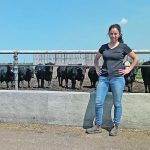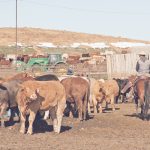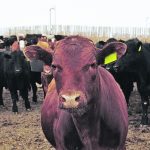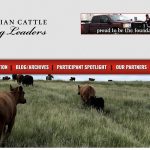Cargill has become a platinum partner of the Canadian Cattle Young Leaders Program. The company’s three-year funding will allow each mentee access to up to a $3,000 travel budget, an increase of $1,000 each, and also helps to fund mentors’ attendance at the annual CYL graduation at the Canadian Beef Industry Conference with their mentee. […] Read more

Alta. brothers win Outstanding Young Farmers
A cattle operation from southern Alberta practises regenerative agriculture and has a strong direct-to-consumer brand
Glacier FarmMedia – Brothers Daniel, Lorin and Barry Doerksen are Alberta’s Outstanding Young Farmers for 2024. The Doerksens, fourth-generation farmers, work with their father, Arno, and their uncle, Tim. They run purebred Hereford and Red Angus cattle, as well as a commercial cow-calf operation near Gem. The brothers do a lot of cropping on irrigated […] Read more
VIDEO: Study tackles corn’s protein problem
CARMAN, Man. — Standing on a patch of bare soil and next to a plot of corn in south-central Manitoba, Talyia Tober delivered a two-minute explanation of her research on corn grazing and seeding high-protein forage crops between the rows of corn. Then the questions started. A group of agronomists, scientists and others touring the […] Read more
Canfax report
This cattle market information is selected from the weekly report from Canfax, a division of the Canadian Cattle Association. More market information, analysis and statistics are available by becoming a Canfax subscriber by calling 403-275-5110 or at www.canfax.ca. Feds trade lower Processors have gained leverage over cattle feeders, which is normal for this time of […] Read more

Chicken, pigs offset beef slump for JBS profits
SAO PAULO (Reuters) — Brazil’s JBS SA, the world’s largest meat packer, said its divisions that process chicken and pigs lifted financial results in the last quarter, including poultry unit Pilgrim’s Pride, JBS USA Pork and Seara in Brazil. Performance there compensated for a slump in the Beef USA division, which accounts for about a third of […] Read more

Study looks at modified live vaccine interference in calves
Vaccines for cattle can be categorized in several ways. We can categorize them by the pathogen that they are designed to protect the animal from (bacterial or viral), or we can categorize them by their route of administration (injectable or nasal). For viral vaccines, we also can split them into modified live or killed vaccines. […] Read more

Research studies viability of straw-based diets
A U of S graduate student attempts to determine how to improve straw rations by adding canola and flax screenings
Years of drought inspired Beatriz Montenegro Gonzalez to examine the potential of feeding wheat straw to cattle during tough economic times. Gonzalez, a graduate student at the University of Saskatchewan, is studying its use in beef cattle diets, as well as canola and flax screenings, to see if they can be economically viable options when […] Read more
Read the label to be safe when using vaccines
Close attention to labels not only ensures the proper dose is administered but also that the vaccines are mixed correctly
The labels on cattle vaccines have important information and producers should make a point of reading them. Lauren Carde, programs director for the Canadian Animal Health Institute, notes they contain information on route of administration, correct dose, timing, animal age and whether boosters are needed. Attention to these specifics “ensure the safety of the human, […] Read more
Handling called key to feedlot
Andrea Stroeve-Sawa of Shipwheel Cattle Feeders learned stockmanship from the man himself: Bud Williams, the guru of low-stress cattle handling. Her father met Williams at a conference and invited him to visit Alberta. Stroeve-Sawa said her father and Williams worked cattle together for two weeks, 12 hours a day, and Williams taught the ins and […] Read more

Handling tied to cattle health
Low-stress handling called an important tool that producers can use to improve their cattle’s health
Lee Sinclair’s interest in low-stress cattle handling emerged during a summer job at a feedlot and carried through to his career with Merck Animal Health. “Nobody had ever told me position, distance and angles make the difference. All we were taught is, ‘we’ve got to get this done’,” Sinclair said of his initial experience working […] Read more



